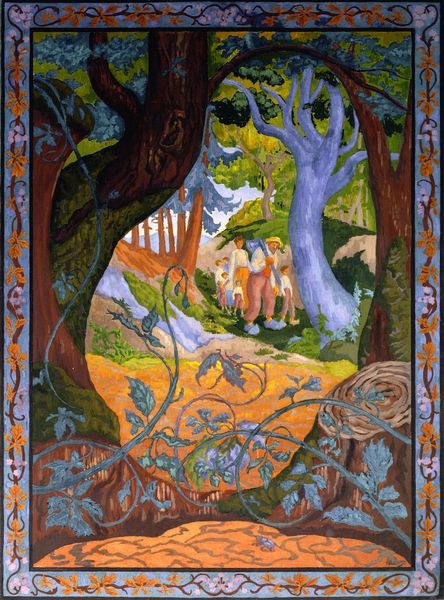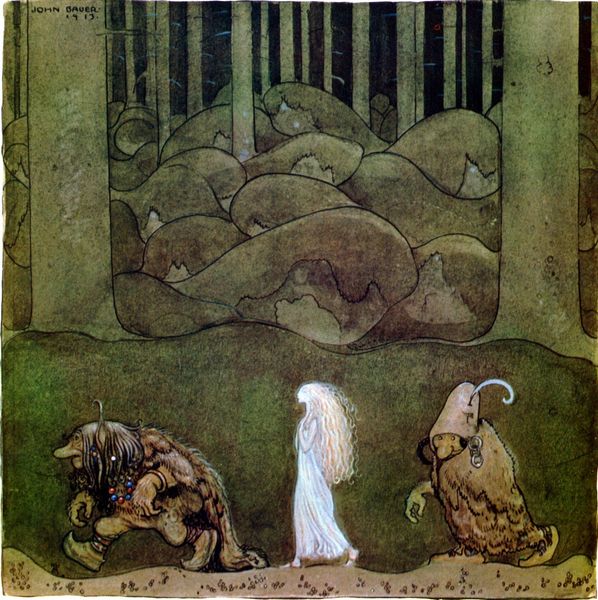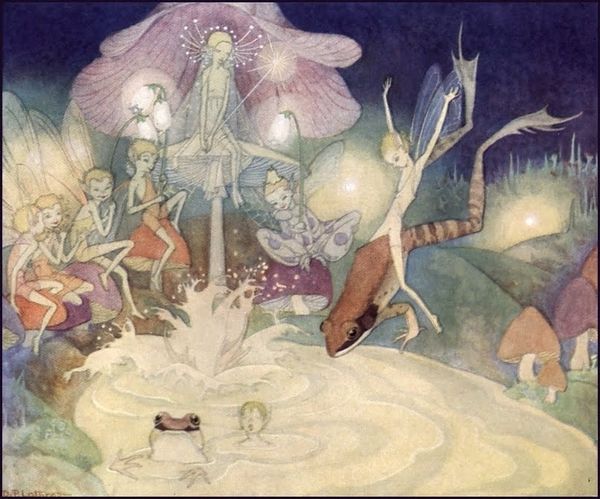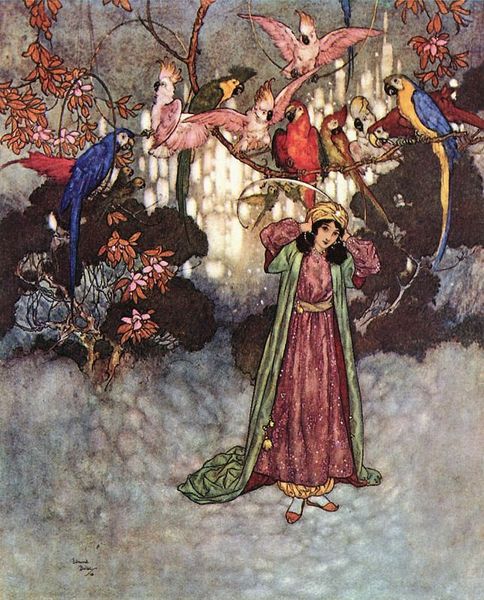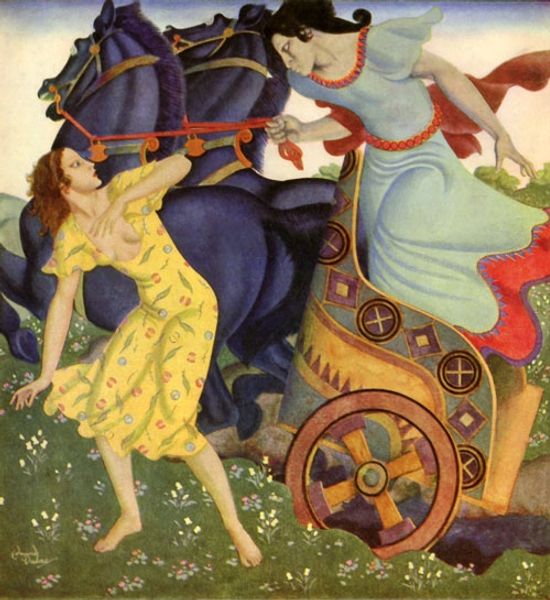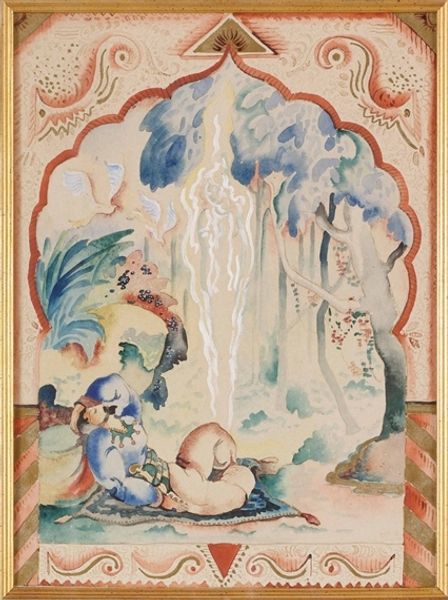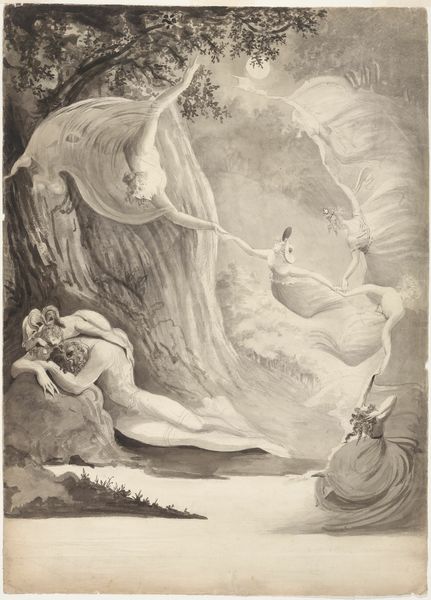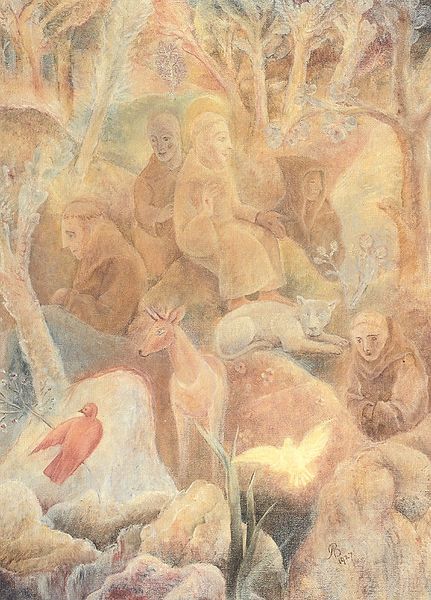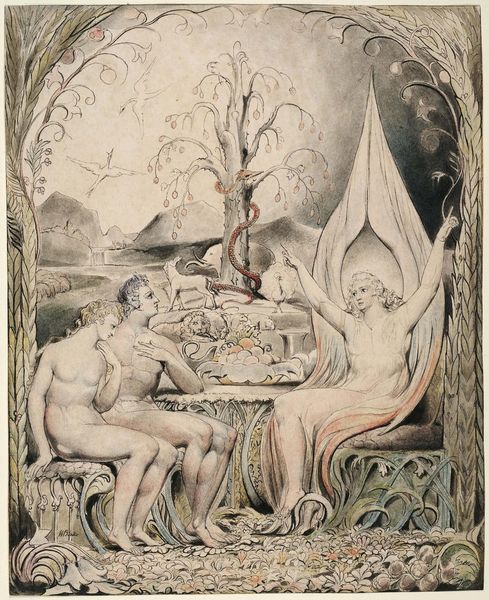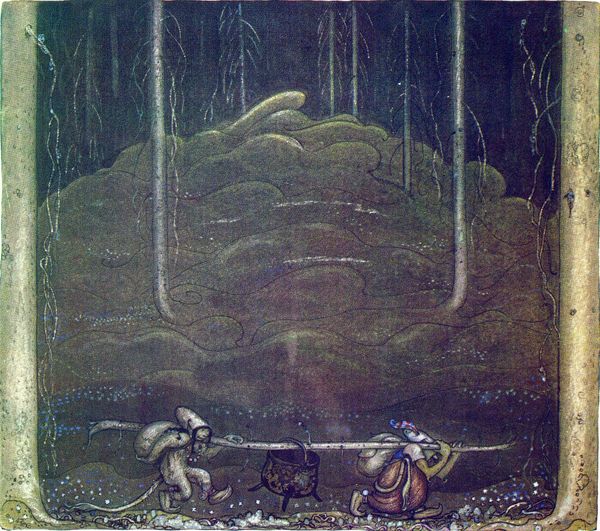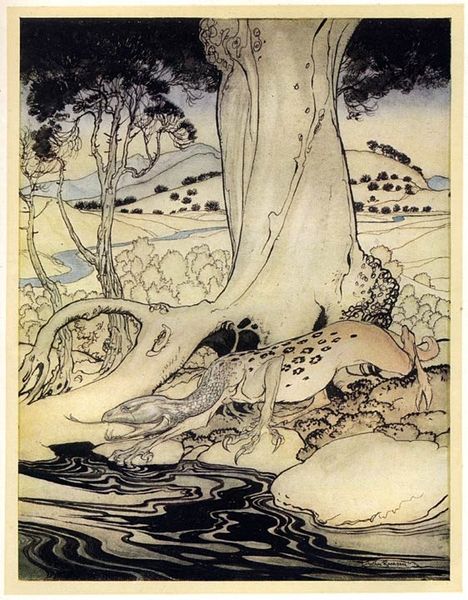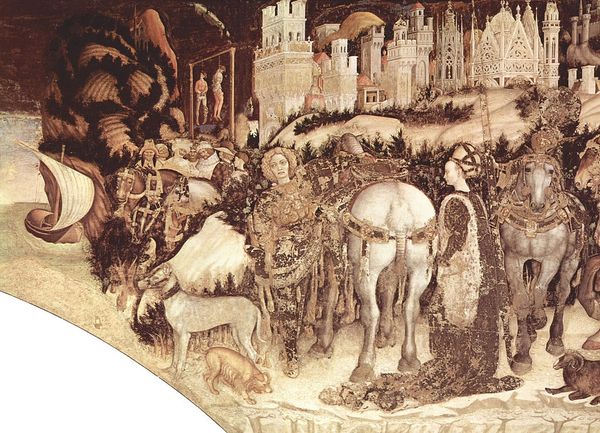
watercolor
#
tree
#
water colours
#
landscape
#
fantasy-art
#
figuration
#
watercolor
#
symbolism
#
watercolour illustration
#
botany
#
mixed media
#
watercolor
Copyright: Kay Nielsen,Fair Use
Editor: Here we have Kay Nielsen’s watercolor titled "The Unicorn (Valiant Little Tailor)". It’s ethereal, with this almost dreamlike quality. The textures created with watercolor are particularly interesting; everything from the man's clothing to the unicorn's hair seem very tactile. How would you approach interpreting a work like this? Curator: This illustration calls my attention to the social function of fairy tales. The story it accompanies was not created in a vacuum. Who was commissioning Nielsen? What was the original cultural context and intent of the Brothers Grimm tale itself, "The Brave Little Tailor"? How do the materials employed – the use of watercolor specifically, instead of, say, oil – affect its perceived value and accessibility? Is watercolor viewed as "lesser," more feminine, or crafted, which has historically impacted how it’s been valued compared to more established art forms? Editor: So, are you saying the *choice* of medium reflects certain cultural values or biases? Curator: Precisely! Consider how the commercial art world values paintings over illustrations, even if they both require immense skill and labor. Where would this image have lived? In a book, reproduced en masse and distributed to a growing literate public. This reproduction devalues the ‘aura’ of the original art, but provides an income stream for the artist. Was this a viable form of labor for Nielsen? We should consider who could *afford* books in this era, as well as access to art, in general. How does this affect the social implications of a widespread piece like this? Editor: That's fascinating! I hadn't considered the labor aspect and how the medium ties into consumption. Curator: Yes. Nielsen's work also opens an interesting discussion around commercial art as a job in itself, and what the economic status was of artists producing fairy tale images at this point. Did the popularity of a subject make an artist “sell out,” or were they successfully making art that provided them with means and sustenance? These are all things to reflect upon when evaluating fairy-tale illustration of the period. Editor: That makes me rethink how I view not just the image but its historical existence. Thanks for providing that framework!
Comments
No comments
Be the first to comment and join the conversation on the ultimate creative platform.

